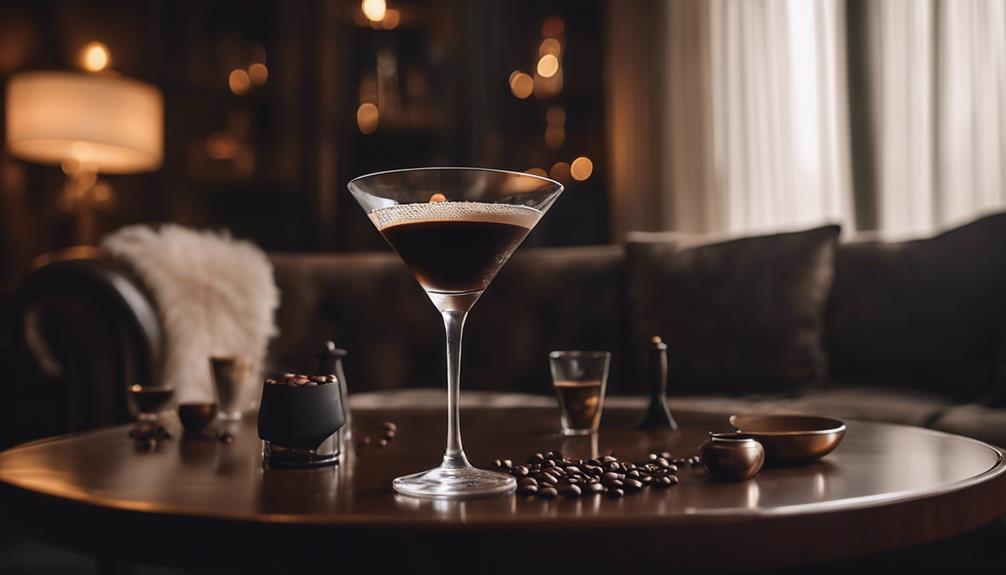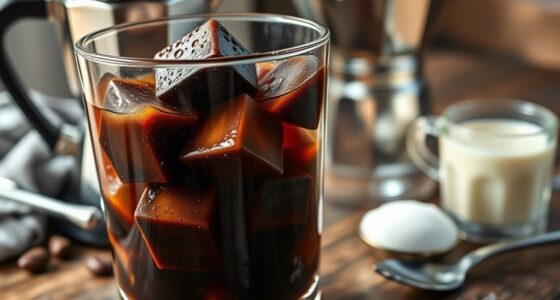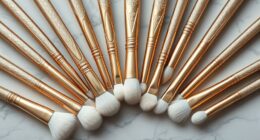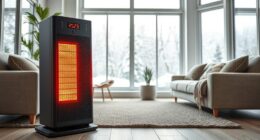You’re on the brink of discovering the ultimate coffee paradise in Houston, where over 200 unique coffee shops offer more than just your average cup of joe, providing a diverse selection of brews that will excite your taste buds and have you yearning for more. From stylish industrial designs to lively atmospheres, each shop has its own distinct charm. Specialty drinks cater to various preferences, with exclusive flavors such as cajeta lattes and locally sourced artisanal brews taking the spotlight. And it’s not just about the coffee – menus showcase everything from breakfast tacos to vegan choices. While you venture around, you’ll stumble upon even more hidden gems and delightful surprises waiting to be enjoyed.
Key Takeaways
- Cafe Espresso stands out in Houston's thriving coffee scene, offering unique brews and atmospheres that cater to diverse tastes and preferences.
- The cafe's emphasis on sustainable, ethically sourced coffee through direct trade ensures high-quality beans that support local farmers and communities.
- From industrial-chic to vibrant and lively, Cafe Espresso's atmosphere is designed to foster productivity, social interaction, and community events.
- Specialty brews and flavors, such as signature lattes and artisanal brews, highlight local ingredients and innovative combinations that tantalize taste buds.
Houston's Vibrant Coffee Culture
As you explore Houston's thriving coffee scene, you'll discover a rich tapestry of over 200 coffee shops, each reflecting the city's diverse palate for specialty brews and local roasters.
You'll find that the city's coffee culture is all about embracing sustainable and ethically sourced coffee, with many shops engaging in direct trade practices with local farmers.
When you're on the hunt for the Best Coffee Shops, you'll stumble upon popular spots like Antidote Coffee and Blacksmith, known for their unique drink offerings.
From signature lattes to artisanal brews that highlight local ingredients, you'll be spoiled for choice.
Whether you're an espresso aficionado or a coffee newbie, Houston's vibrant coffee culture has something for everyone.
You'll find that the city's coffee shops are more than just a place to grab a quick cup; they're community hubs where you can connect with fellow coffee enthusiasts and learn about the latest brewing techniques.
Unique Coffee Shop Atmospheres
As you explore Houston's coffee scene, you'll discover shops that transport you to a bygone era, while others energize you with vibrant colors and lively vibes.
You'll find industrial-chic ambiance in some, perfect for remote work or casual meetups, and others that offer a one-of-a-kind experience that's sure to leave a lasting impression.
Whether you're looking for a productive spot or a social hub, these unique coffee shop atmospheres are sure to captivate you.
Industrial Chic Ambiance
Walking into a coffee shop with an industrial chic ambiance, you're immediately struck by the trendy vibe created by exposed brick, metal accents, and large windows that flood the space with natural light. This unique atmosphere is a staple of many popular coffee shops in Houston, transforming them into vibrant gathering spaces.
Here are some key features that make industrial chic coffee shops stand out:
- Open layouts and comfortable seating arrangements create a productive environment for remote workers and students.
- Stylish decor and quality brews emphasize the third-wave coffee culture, where aesthetics enhance the overall coffee experience.
- Blending industrial elements with vibrant color schemes and creative design fosters a lively atmosphere for socializing and enjoying specialty drinks.
- Many industrial-themed coffee shops host community events and tastings, further enhancing their appeal as communal spaces.
Vibrant Coffee Experiences
Step into one of Houston's vibrant coffee shops, and you're in for a treat – each unique atmosphere is carefully crafted to elevate your coffee experience.
At Tenfold Coffee Company and Boomtown Coffee, you'll find industrial-style decor with ample natural lighting, perfect for remote work or study sessions.
If you're looking for a more inviting atmosphere, La La Land Kind Cafe and Antidote Coffee have got you covered with friendly staff and diverse drink menus, including a revitalizing lavender bloom matcha latte.
Want to mix coffee with a little fun? Retrospect Coffee Bar, located in a historic gas station, offers exclusively outdoor seating and serves up an espresso martini to get your day going.
Meanwhile, Eden Plant Co. combines a coffee shop with a plant nursery, providing a relaxing environment for coffee lovers and plant enthusiasts alike.
And if you're hungry, grab some breakfast tacos to go with your coffee at one of these vibrant spots.
Each cafe is a unique gem, waiting to be discovered and savored.
Specialty Brews and Flavors
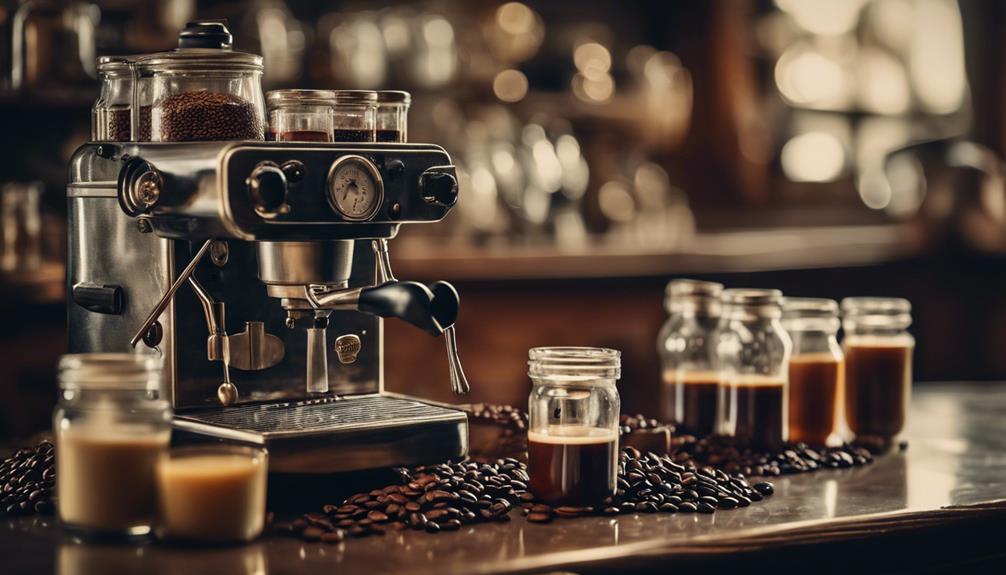
Among the vibrant coffee shops in Houston, you'll discover a thriving scene of specialty brews and flavors that cater to your diverse tastes and preferences. From unique flavored lattes to seasonal drinks that highlight local ingredients, there's something for everyone.
Some standout options include:
- Antidote Coffee's signature cajeta latte, made with goat's milk caramel, showcasing inventive flavor combinations.
- Fifth Vessel and Simply Coffie's seasonal offerings, such as Pumpkin Patch lattes that celebrate local flavors and traditions.
- The popularity of cold brew options, particularly nitro coffee, providing a creamy texture and invigorating alternative to traditional hot brews.
- OSO Coffee Co.'s Mexican-inspired beverages like horchata lattes, catering to diverse palates and preferences.
Food Pairings and Menus
As you explore the world of cafe espresso brews, you'll notice that many shops offer more than just a great cup of coffee. You may find cozy coffee spots with comfortable seating and friendly atmospheres, perfect for catching up with friends or getting lost in a good book. Some cafes also offer delicious pastries, sandwiches, and other treats to enjoy alongside your espresso. With all these extra offerings, cafes are more than just a place for a quick caffeine fix; they can be a destination for relaxation and socializing.
You'll have the opportunity to pair your espresso with a variety of breakfast options, from traditional pastries to savory breakfast tacos and omelets, allowing you to craft the perfect morning combination.
Breakfast Options
Frequently, you'll find that Houston's coffee shops go beyond the standard coffee-and-toast combo, offering a diverse range of breakfast options that beautifully complement their expertly brewed espresso.
Whether you're in the mood for something sweet and savory or a light bite to start your day, these cafes have got you covered.
Here are some standout breakfast options to explore:
- Boomtown Coffee and Roast & Brew offer European-inspired menus featuring gyros, omelets, and breakfast tacos.
- Catalina Coffee and White Tile Cafe provide a selection of pastries and light bites perfect for a casual breakfast outing.
- La La Land Kind Cafe caters to families with dietary restrictions, offering vegan options in a welcoming atmosphere.
- Fifth Vessel and Simply Coffie highlight local ingredients in their seasonal menu items, ensuring fresh and reflective breakfast pairings.
These breakfast options will elevate your coffee experience, so don't settle for just any old coffee-and-toast combo.
Explore Houston's vibrant coffee scene and discover the perfect breakfast pairing for your taste buds.
Coffee Pairings
You'll find that Houston's coffee shops take their coffee pairings to the next level by offering expertly crafted menus that beautifully complement their specialty brews. From European-inspired breakfast options to sweet pastries and light bites, each coffee shop has its unique twist.
| Coffee Shop | Menu Highlights | Pairing Suggestions |
|---|---|---|
| Roast & Brew | Gyros, omelets, breakfast tacos | Pair with a freshly roasted coffee for a morning boost |
| Catalina Coffee | Fresh pastries, quiches | Enjoy with a cappuccino or espresso martini |
| OSO Coffee Co. | Mexican-inspired snacks, horchata lattes | Try with a traditional Mexican treat, like churros |
Whether you're in the mood for a casual coffee break or a cultural flavor experience, Houston's coffee bars have got you covered. Many cafes offer signature drinks, like the cajeta latte, and recommend specific food pairings to enhance the overall flavor experience. At the end of the day, you can't go wrong with a classic coffee and pastry combination at any of these exceptional coffee bars.
Signature Drinks and Offerings

Plunge into the world of signature drinks and offerings, where local coffee shops brew up unique flavors that set them apart from the rest. You'll discover an array of exciting flavors that will tantalize your taste buds and leave you craving for more.
Here are some signature drinks and offerings you won't want to miss:
- Antidote Coffee's cajeta latte, featuring goat's milk caramel for a twist on traditional coffee drinks.
- OSO Coffee Co.'s horchata latte, combining creamy horchata with espresso for a revitalizing flavor.
- Campesino Coffee House #2's cafe de olla, a traditional Mexican coffee brewed with cinnamon and piloncillo.
- Fifth Vessel's artisanal coffee drinks made from local ingredients, highlighting seasonal flavors.
From bottled cold brews to expertly poured drip coffee, each shop offers a unique experience that will make you feel like you're sipping on something truly special.
Community Events and Gatherings
What sets Houston's coffee shops apart is their ability to transform from daily hangouts to vibrant community hubs through their unique events and gatherings.
You'll find yourself surrounded by like-minded coffee enthusiasts at Fifth Vessel's coffee tastings and workshops or Eden Plant Co.'s educational sessions.
Agora's cozy atmosphere makes it the perfect spot for evening gatherings, with events catering to diverse community interests. You might even stumble upon live performances by local artists and musicians, adding to the vibrant atmosphere.
Happy hour at Antidote Coffee or La La Land Kind Cafe is a great way to unwind, with family-friendly events and art showcases that promote community bonding.
Boomtown Coffee takes it a step further with loyalty programs that encourage repeat visits and local patronage.
By supporting local talent and prioritizing community engagement, these coffee shops have become an integral part of Houston's social fabric.
As you explore the city's coffee scene, you'll find that these community events and gatherings make all the difference.
Sustainability and Quality Practices
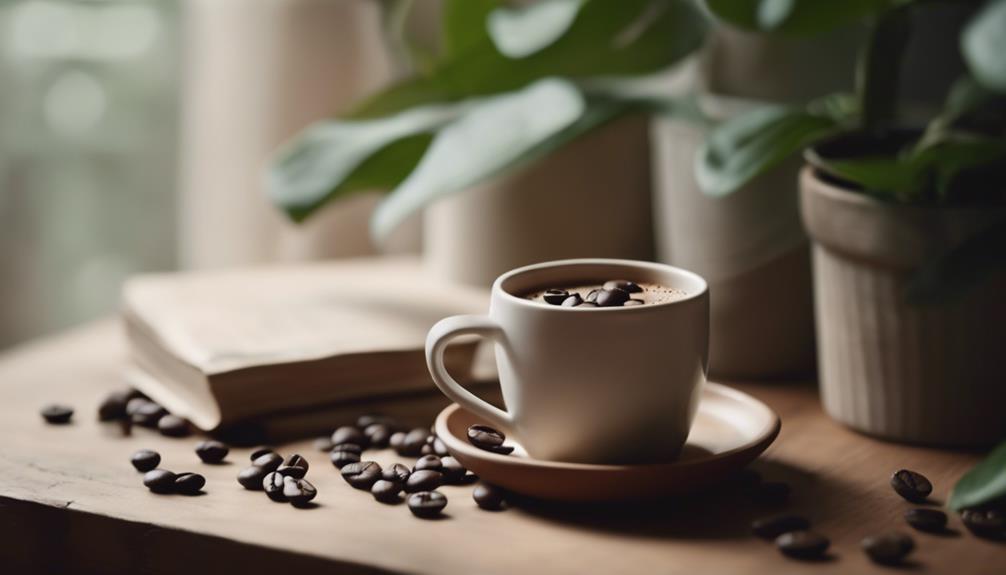
As you explore the world of Houston's coffee shops, it becomes clear that a commitment to sustainability and quality practices is woven into the fabric of their daily operations. You'll find that many shops prioritize sustainability by sourcing coffee from ethical farms, guaranteeing fair trade practices that support local farmers and communities.
Here are some ways Houston's coffee shops are leading the way:
- They're switching to eco-friendly packaging, and some even offer discounts for customers who use reusable cups.
- Cafes like Fifth Vessel and Simply Coffie implement waste reduction initiatives, including composting and recycling programs to minimize their environmental impact.
- You'll often find transparency in their sourcing, with shops highlighting the origins of their beans and the farmers they partner with in their marketing materials.
- The growing trend of plant-based milk alternatives in coffee drinks reflects a health-conscious approach and commitment to sustainability, reducing the carbon footprint associated with dairy production.
Frequently Asked Questions
Is Espresso the Best Brewing Method?
You're wondering if espresso is the best brewing method, and honestly, it's hard to argue against its rich flavors and aromas. With its precise extraction and velvety crema, it's no wonder espresso is a favorite among coffee connoisseurs!
What Is the Best Drink to Get at a Cafe?
You're likely one of the 68% of coffee lovers who crave a perfect cup daily! When it comes to the best drink to get at a cafe, you can't go wrong with a Caffe Latte, Cappuccino, or Espresso con Panna, each offering a unique flavor profile.
Where Does the Best Espresso Come From?
You're wondering where the best espresso comes from? High-altitude regions like Italy, Brazil, and Colombia are renowned for producing rich, flavorful beans. These countries' beans develop unique characteristics due to their climate and soil conditions.
Is Espresso Good Coffee?
You're wondering if espresso is good coffee? Well, let's get to the grind – espresso's concentrated flavor, rich aroma, and velvety crema make it a sensory delight, a symphony of flavors that will leave you humming for more.
Conclusion
As you wrap up your coffee crawl, remember that Houston's vibrant coffee culture is more than just a trend – it's a staple.
Did you know that 68% of coffee drinkers consider coffee a daily necessity?
It's no wonder that cafe espresso has become a hub for creatives, entrepreneurs, and coffee enthusiasts alike.
With its unique atmospheres, specialty brews, and commitment to sustainability, Houston's coffee scene is brewing up a storm that's here to stay.

